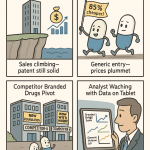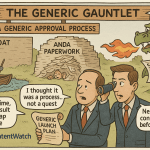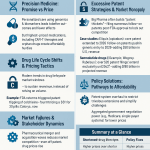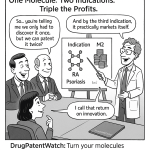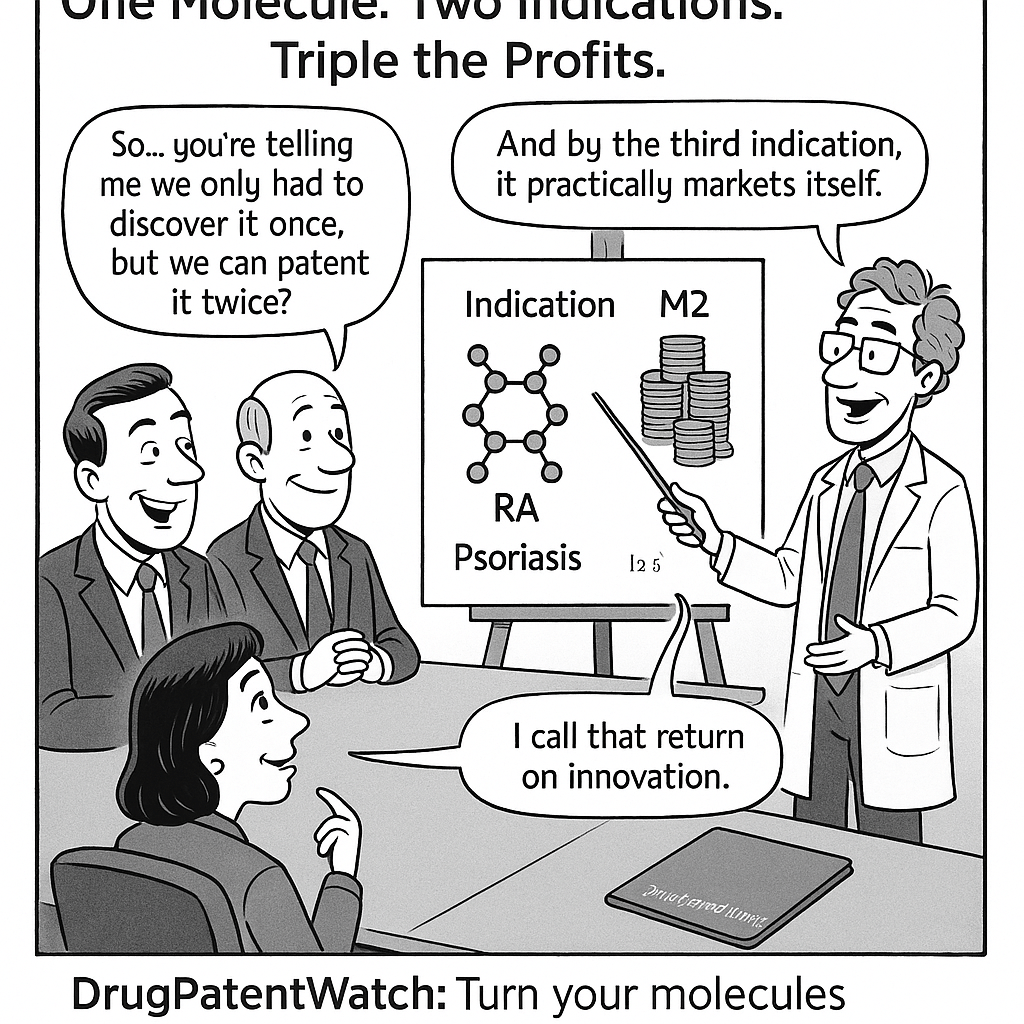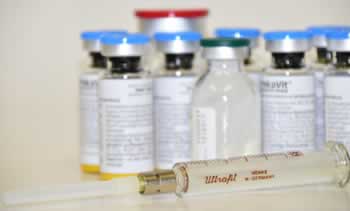Introduction
Generic drugs are the unsung heroes of modern healthcare. They account for 91% of prescriptions in the United States yet represent only 18% of total drug spending[^1]. Understanding how generic drugs are priced—and why those prices fluctuate—is critical for executives, policy-makers, and business leaders who want to use data-driven strategies to win in a competitive market.
Let’s dive into the intricacies of generic drug pricing strategies and how they shape economic decision-making in the pharmaceutical industry.
What Are Generic Drugs?
Definition and Key Characteristics
Generic drugs are copies of brand-name drugs with the same active ingredients, strength, dosage form, and route of administration. Unlike branded drugs, they don’t carry the same R&D burden, which gives them a pricing edge.
Common Misconceptions
Many believe generics are of lower quality. However, FDA regulations ensure they meet the same safety, efficacy, and manufacturing standards as their brand-name counterparts[^2].
The Generic Drug Approval Process
Abbreviated New Drug Application (ANDA)
To enter the market, generic manufacturers must file an ANDA with the FDA. This allows for a faster route to approval, bypassing the need for new clinical trials[^2].
Patent Expiry and Exclusivity Windows
Generic entry usually follows the expiration of a drug’s patent or the resolution of litigation, often accompanied by 180-day exclusivity for the first approved generic manufacturer[^3].
Why Generic Drugs Matter
Cost Savings for Healthcare Systems
Generics offer massive cost savings. Medicare alone saved $90 billion in 2022 through generic substitution[^11].
Access for Patients
Lower costs drive higher medication adherence and improve public health outcomes, especially for chronic conditions.
Key Drivers of Generic Drug Pricing
Number of Market Entrants
Prices drop dramatically with increased competition. A drug with only one generic version can be nearly as expensive as the brand. By the time there are four or more, prices typically fall by 85%[^5].
Manufacturing Costs
While lower than branded drugs, generics still require capital investment, particularly in regulatory compliance, packaging, and testing.
API Availability and Sourcing
Shortages of active pharmaceutical ingredients (APIs) can drive up prices. Over 70% of U.S. generic drug APIs are sourced overseas, making the supply chain vulnerable[^13].
Competitive Dynamics in Generic Markets
Price Wars and Erosion
Once exclusivity ends, multiple players enter the field, triggering aggressive price competition. While good for consumers, this can lead to unsustainable margins and exits by smaller firms.
Market Concentration
Five companies control over 60% of the U.S. generic market, leading to oligopolistic behaviors and sometimes collusion[^10].
Impact of Consolidation
Mergers among generic manufacturers often reduce competition, slow price declines, and increase regulatory scrutiny[^9].
Supply Chain Economics and Manufacturing
Vertical Integration Trends
Some companies are vertically integrating to reduce costs and secure supply. Endo and Sandoz have both adopted in-house API production[^14][^15].
Outsourcing vs. In-House Manufacturing
While outsourcing to contract development and manufacturing organizations (CDMOs) reduces capital risk, it may expose companies to geopolitical and quality control risks.
Regulatory Pressures and Incentives
FDA’s Drug Competition Action Plan
This initiative aims to expedite generic drug approvals and reduce bottlenecks in competition[^2].
GDUFA (Generic Drug User Fee Amendments)
GDUFA fees have increased predictability but added financial pressure on small manufacturers, possibly reducing the number of applicants[^3].
FTC and DOJ Antitrust Oversight
Antitrust litigation has become more frequent. The FTC has investigated over a dozen price-fixing cases in the past decade[^9].
Government and Payer Roles in Pricing
Medicare and Medicaid
Government programs have tiered formularies favoring generics. CMS sets reimbursement benchmarks like AMP (Average Manufacturer Price)[^11].
Rebate and Pricing Transparency Laws
New laws require disclosure of pricing and rebate structures, particularly under the Inflation Reduction Act of 2022[^16].
Global Market Variations in Pricing Strategies
Europe
Europe regulates generic drug pricing more aggressively, often mandating price cuts upon entry. In Germany, prices are 50% lower on average[^6].
India and Developing Countries
India, a key API and finished-dose supplier, has price controls on essential medicines to ensure affordability[^6].
United States
A more market-driven system results in wider price variability and opportunities for price manipulation.
Brand vs. Generic: A Cost Perspective
Price Differentials
Branded drugs are often 10 to 20 times more expensive than generics. A 2023 RAND study found U.S. generics were priced 84% lower than their branded counterparts[^7].
Patient Behavior and Prescriber Influence
Even when generics are available, some patients and doctors prefer brands due to perceived quality or brand loyalty.
Strategic Pricing Models for Generics
Penetration Pricing
Companies enter with low prices to rapidly gain market share. Once established, they may raise prices slightly to cover margins.
Loss Leader Strategy
Some firms price key generics at a loss to win contracts or gain formulary status, subsidizing through higher-margin drugs.
Tiered Pricing for Different Markets
Multi-market players often price generics lower in low-income markets to maintain volume while retaining margin in high-income ones.
Challenges in Sustaining Low Prices
Manufacturing Plant Closures
Rising costs and price pressures have forced companies like Teva and Sandoz to shut facilities[^15].
Quality Failures and Recalls
Recalls due to contamination or non-compliance can be financially devastating and erode trust.
Lack of Profitability
Margins have eroded to the point where some older generics are abandoned, leading to shortages and price spikes[^5].
The Impact of Biosimilars
What Are Biosimilars?
Biosimilars are generic versions of biologic drugs. Unlike traditional generics, they’re not exact copies but are highly similar.
Market Uptake Challenges
Biosimilars face regulatory hurdles, physician skepticism, and marketing resistance from incumbents[^20].
Savings Potential
Biosimilars could save the U.S. healthcare system $54 billion over 10 years, but uptake remains sluggish[^20].
Future Outlook
Policy Shifts
Policymakers are exploring price caps, incentivized competition, and subsidies for essential generics.
Technology Integration
AI-driven forecasting and blockchain supply chains promise to streamline production and pricing models.
Emerging Markets
Expanding into Africa, Southeast Asia, and Latin America presents both opportunities and regulatory complexity.
Key Takeaways
- Generics play a pivotal role in reducing drug costs and improving access.
- Pricing strategies depend heavily on market competition, regulation, and supply chain dynamics.
- Sustaining profitability while maintaining affordability is a key industry challenge.
- Policymakers and executives must align to support a competitive yet stable generic drug ecosystem.
FAQs
1. Why are generic drugs cheaper than brand-name drugs?
Because they skip the costly R&D phase and benefit from streamlined regulatory approval, generics can be sold at a fraction of the original price.
2. Can a generic drug be more expensive than the brand-name version?
Yes, particularly when there’s little or no competition or when supply chain issues arise.
3. What happens if only one company makes a generic drug?
Without competition, that company may price the drug higher. This is known as a generic monopoly.
4. Why do companies leave the generic drug market?
Thin margins, regulatory burdens, and quality control costs can make continued production unprofitable.
5. How do biosimilars differ from generics?
Biosimilars are for biologic drugs and are similar, but not identical, due to the complexity of biological production.
Sources
- Association for Accessible Medicines (AAM). U.S. Generic & Biosimilar Medicines Savings Report 2023.
- U.S. Food and Drug Administration (FDA). Drug Competition Action Plan.
- U.S. Food and Drug Administration (FDA). Generic Drug User Fee Amendments (GDUFA) reports.
- Congressional Budget Office (CBO). Research and Development in the Pharmaceutical Industry.
- Government Accountability Office (GAO). Generic Drug Pricing: Research on Competition and Price Trends.
- World Health Organization (WHO). Pricing Policies of Generic Medicines: Report of the WHO Regional Office for Europe.
- RAND Corporation. Prescription Drug Prices in the United States Compared to Other Countries, 2024 Update.
- Pew Charitable Trusts. Drug Spending and Pricing Trends for Generic Medicines.
- Federal Trade Commission (FTC). Policy Perspectives: Competition and the Potential for Biosimilars.
- IQVIA Institute for Human Data Science. Medicine Use and Spending in the U.S. – 2023.
- Office of the Assistant Secretary for Planning and Evaluation (ASPE). Medicare Part D: Use of Generic Drugs and Cost Savings.
- S. Dusetzina et al. Health Affairs, multiple articles on generic and biosimilar cost trends.
- U.S. Pharmacopoeia (USP). API Sourcing and Vulnerabilities Report, 2025.
- Endo International Investor Calls and Earnings Reports.
- Sandoz Newsroom. Plant Closures and Strategic Shifts in the Generics Portfolio.
- U.S. Inflation Reduction Act of 2022.
- CMS (Centers for Medicare & Medicaid Services). Medicaid Drug Rebate Program Overview.
- MedPAC Reports to Congress on Medicare Part D and drug pricing trends.
- Biologics Price Competition and Innovation Act (BPCIA) Summary from FDA.
- JAMA and NEJM articles on biosimilar uptake and comparative effectiveness.





